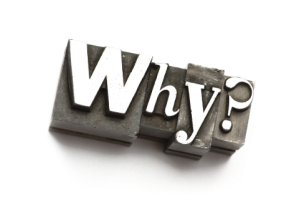Wandering the Path: Reflecting on Influence, Books, & Intersections
February 2, 2016 § Leave a comment
Inspired by my lovely wife and her observation that I embody the Tolkien quote “Not all who wander are lost,” my goal is for this piece to be continuation of a series highlighting aspects of my thinking, my strengths, and my authentic self as I attempt to connect more deeply with you all.
From the Outside/In
Gallup’s StrengthsQuest identified Connectedness as one of my top five strengths. In short, I enjoy pursuing and learning about the intersections in life. This makes my forays on Twitter into thought experiments that can excite and enliven my thinking. Since the start of the new year, I’ve noted a large number of reading lists or suggested readings by teachers for teachers. Most of them (if not all) are texts about teaching, how to teach, or how not to teach. Some of the titles are popular ones like Teach Like a Pirate by Dave Burgess while others are less widely known like Master the Media by Julie Smith. Each suggestion led me to another equally good suggestion. On my Twitterfeed, I also found a number of articles about how racism, sexism, poverty, food insecurity, etc. negatively affect student achievement in the classroom.
Naturally, my Connectedness kicked in, and I began to extrapolate from how all of these outside factors affect students to how our outside factors affect us as educators. Like the research on students, this is a massive topic with multiple approaches. Long story long, my train of thought led me back to the books we read and how they might impact our classes, our teaching, and also our students. When I say the books we read, I don’t just mean books on education, either. The correlation between those books and our practices are already tangible. No thought experiment needed.
Disclaimer: I am not in any way trying to put down the work of teachers who write about pedagogy; I think those books are awesome! Full stop.
There are a good number of excellent teaching/pedagogy resources written by educators from all P-20 levels of our school systems. They bring different perspectives on classroom practices, navigating the systems, breaking the norms, social justice, and more. A number of them have rightfully put best practices at the forefront of our everyday education discussions. Find them, read them, and write your book, too! We all benefit when we learn from each other: I truly believe that. But it would be incomplete to say that our teac hing practices are fully encapsulated by books on pedagogical practice and theory alone. Our humanity is multifaceted and teaching is only one — often significant — facet. What about the rest? What forces outside of pedagogy influence you?
hing practices are fully encapsulated by books on pedagogical practice and theory alone. Our humanity is multifaceted and teaching is only one — often significant — facet. What about the rest? What forces outside of pedagogy influence you?
We can call them influences, circumstances, or intersectionality. Whatever the name you choose to call it, most educators — at all levels — recognize the impact of elements outside of the classroom on the learning inside of the classroom. In the K-12 system, there is a notable push for whole-child learning, encouraging teachers to be aware of and responsive to all that affects their students’ lives. In higher education circles, you’ll find discussions on the impact of campus involvement with retention and success rates of their students. These are simply two of the examples most familiar to me regarding student achievement in the classroom as more complex than just academic concerns. Though the methods, research, and practicality of education inclusive of an entire student’s identity and external influences may elicit differing opinions and approaches, educators today are cognizant of these factors, and this is good for our students and us, too.
Why does it matter?
Yes, practical classroom experience is a major influence on our classrooms. Pedagogical research and specific strategies for curriculum, praxis, and more also have very clear and direct impacts on our teaching. Both of these things deserve adequate reflection and growth. We can take an adaptation of improv acting from our community troupe and create an article detailing how to build assignments. We can also share resources about classroom crafts via Pinterest. Those are awesome. But what about the subtle, subconscious influences of our interests that don’t easily manifest in curricular choices?
Much like our students, the most important external element affecting our everyday practice may differ. However, the intersections of our interests, such as the books we read, do have an impact on our worldview. Notable books (aka the ones we remember and recommend) expose us to ideas, cultures, and information while spurring us on to try something, avoid something, read something, learn something. They shape us often in subtle ways that we should be at least cognizant of if not actively reflect upon.
How we do what we do is useful, but why we do what we do is enlightening. Through exploring our why, we get to see our authentic selves. And wrapped up in that authenticity are the intersections of our influences, beliefs, and experiences. Those who know me personally know that I am a firm believer in authentic education practices. I will often challenge myself by asking “How can you expect your students to be authentic and honest if you are not?” I don’t know about you, but I am not always so certain about who my authentic self is in every single situation. I know who I am presenting to others in each scenario, but do I know who is lying beneath the surface in my authentic self that influences my actions and/or reactions? There are many facets of life on which we can reflect and analyze, but today I am interested in what you, the reader, are reading because books are portals into worlds and ways of knowing that shape us consciously and subconsciously.
each scenario, but do I know who is lying beneath the surface in my authentic self that influences my actions and/or reactions? There are many facets of life on which we can reflect and analyze, but today I am interested in what you, the reader, are reading because books are portals into worlds and ways of knowing that shape us consciously and subconsciously.
What non-education books are you reading and what do they reveal about your authentic self that knowingly or unknowingly creeps into your classroom practices?
How this Manifests for Me
Being a curious and connection-driven personality, I am always on the lookout for interesting concepts that could help me be better in the classroom. I imagine that many of you do the same whether you identify them as non-teaching books or not. (Some of us see everything as part of the teaching/learning dynamic and that’s cool too!) For my own reflection, I’ve created a few rough categories of what I consider to be non-teaching books. Some are more closely related to praxis than others, but I’ve tried to leave out any texts that directly address how we teach, the building of lessons, or practical and theoretical classroom applications.
- Stories from the Classroom: These are books written about the lives of being a teacher without directly imparting pedagogical practices or how-tos of any sort. Indirectly, they can illuminate practices, attitudes, and curricular choices, but that isn’t the goal of the book per se. Ex. This Is Not a Test by Jose Luis Vilson
- Because…Science: These are books that detail different elements of science that can help us better understand ourselves, our students, the environment, and more. Though the intent here is not to focus on discipline specific texts for teachers of those specific disciplines which totally counts, it’s more about learning science because it teaches us more about ourselves, our environment, and the consequences of our actions. Ex. The Dyslexic Advantage by Brock L. Eide & Fernette F. Eide
- Motivating and Inspiring: These are books that give us insight into why humans do or don’t do things. There is crossover between these books and the Because…Science books, but I split hairs based on the intent of the author. If the author’s focus is more on how the science works, then I categorize it in the previous group. If instead the author focuses on habits, outcomes, and associated behaviors, I put it here. Ex. The Happiness Advantage by Shawn Achor
- Context, Context, Context: These are books that detail the happenings in the world surrounding events, ideas, discoveries, etc.. Since context can touch many facets of our lives, this is also my catchall category. Ex. Reality is Broken by Jane McGonigal
- Social Justice: These are books that highlight social issues, inequalities, and more. Though not only focused on -isms, books that put -isms in the spotlight so they may be confronted are common here. Ex. A People’s History of the United States by Howard Zinn
Asking why is a part of who I am, so it’s not much of a stretch for me to connect on a personal level to Simon Sinek’s book Start with Why. From business to invention to social justice, Sinek describes how why drives behavior in ways that what, how, or any other approach just can’t consistently replicate. Our connection to our why is as much biological as it is emotional or psychological. In short, the part of our brain that controls belief and emotion is the same part that drives decision making.
Though I may have always been someone who asks why, it wasn’t until this book that I confronted the practice and consciously decided whether or not it benefited my students when I did bring it into my classroom.
Slowly, I began to integrate this concept of starting with why into my writing courses. At first, I used well regulated and easily graded assignments, eventually evolving my practice into a more organic guided exploration of what motivates my students. Starting with why is now my approach to research writing. We no longer begin with a topic (what) or a solution (how) in my classes. We begin with a question, not just any question but a why question that intersects with the individual student in a tangible way. So now a paper on negativity in the news (what) and avoiding the effects (how) begins with “Why are there so many more negative stories in the news than positive ones?” The results have been enjoyable, and what I learned from my student’s why paper was notably greater than what I had learned from similar how and what approaches by students on the same topic in the past.
Here’s where my why intersects with your what. What are you reading and why?

What words would you add?